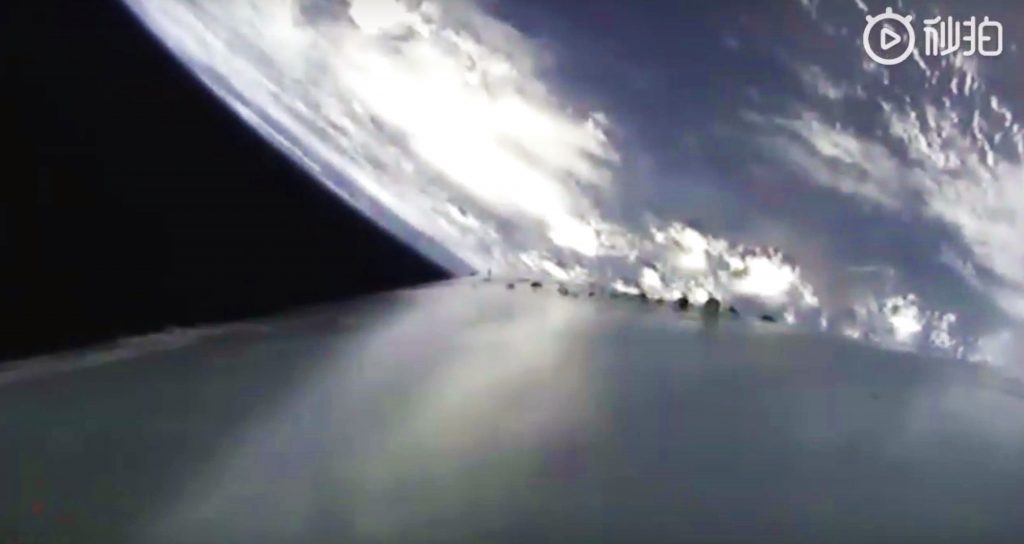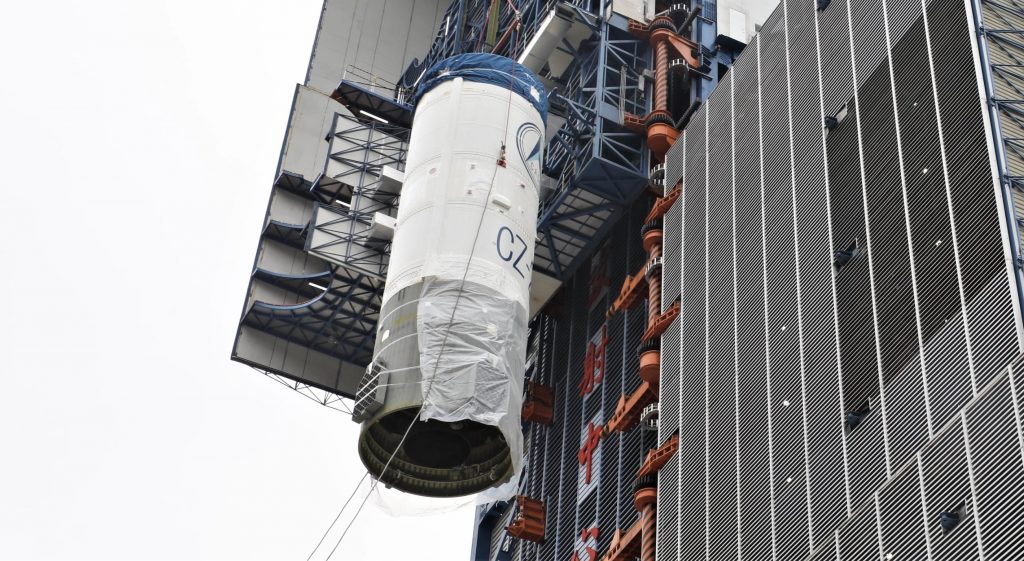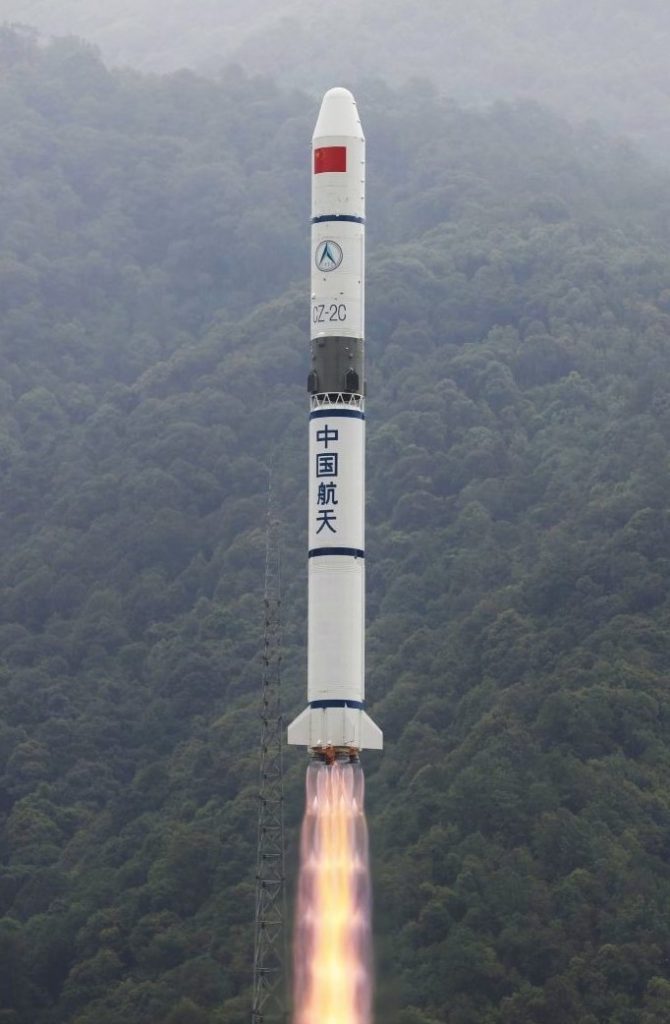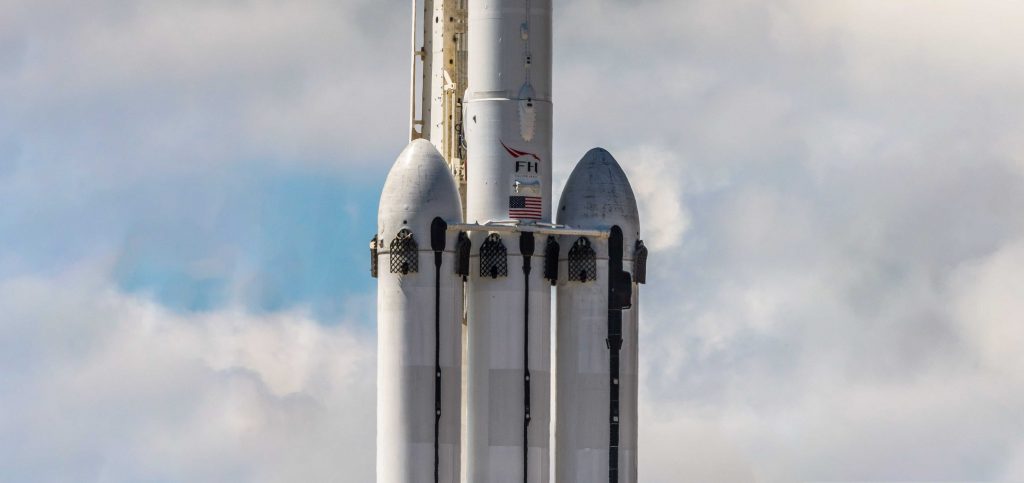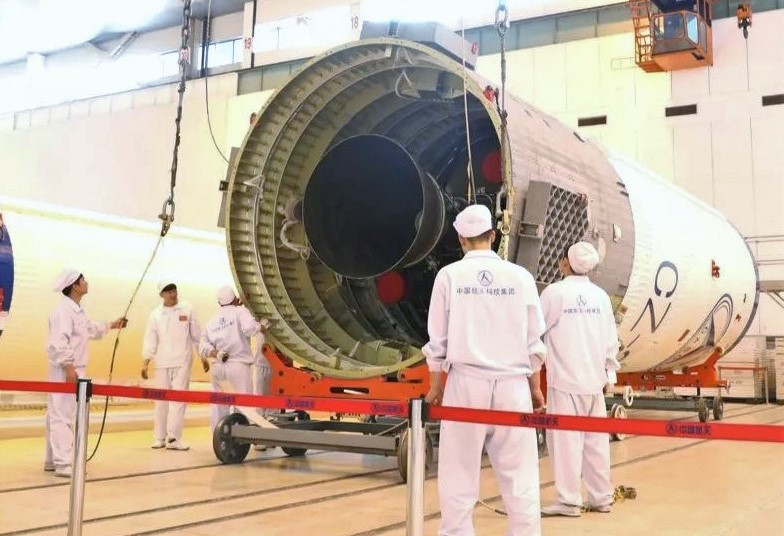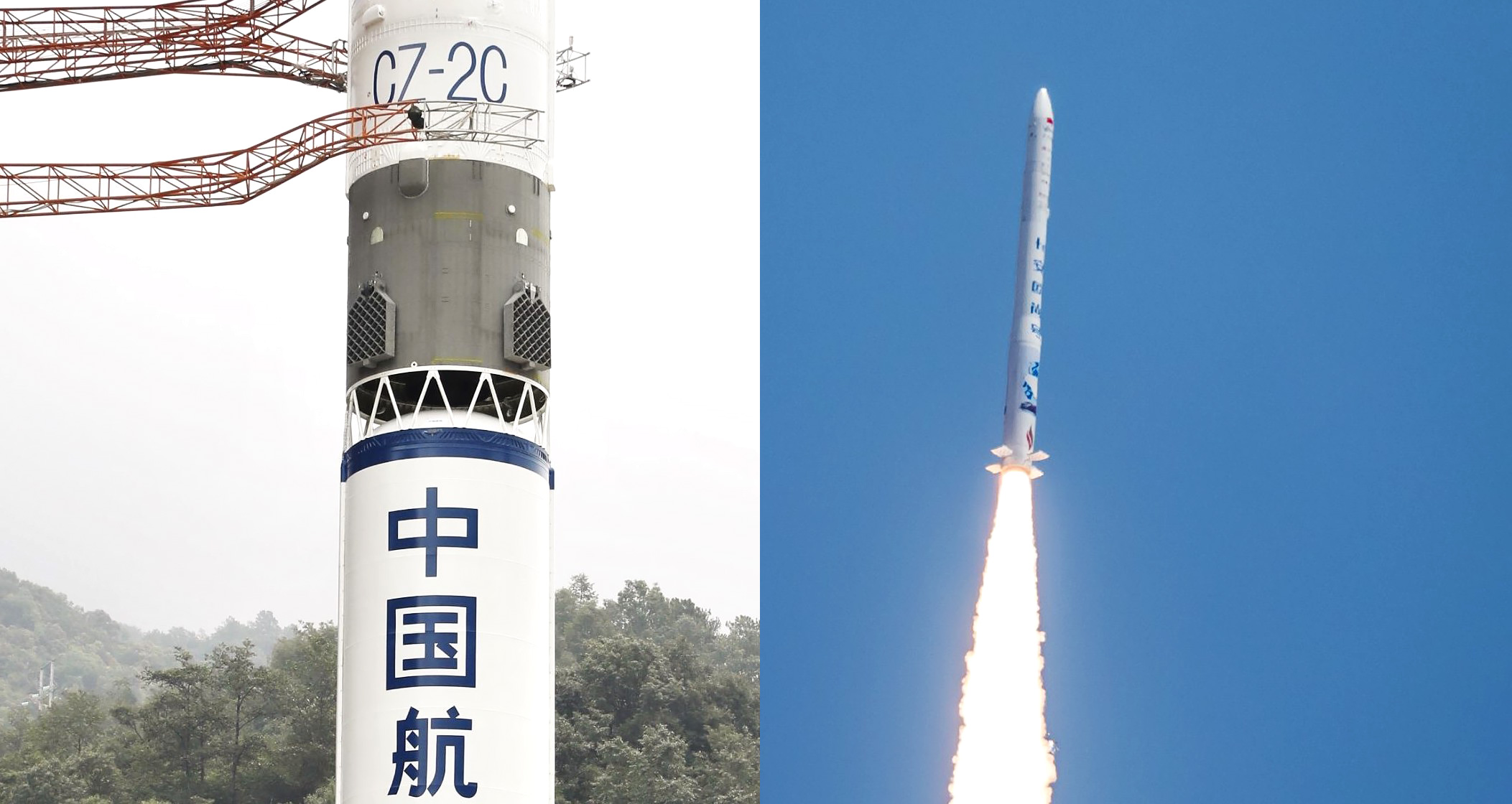

News
DeepSpace: China tests SpaceX-reminiscent grid fins after iSpace snags orbital milestone
Eric Ralph · August 1st, 2019
Welcome to the latest edition of DeepSpace! Each week, Teslarati space reporter Eric Ralph hand-crafts this newsletter to give you a breakdown of what’s happening in the space industry and what you need to know.
Although the accomplishments aren’t quite as flashy as a launch to the Moon, the last week has featured a number of interesting developments and significant milestones from both the state-run and quasi-commercial wings of Chinese spaceflight.
In the commercial realm, Chinese startup iSpace became the country’s first commercial entity to successfully reach orbit, achieving the feat with a three-stage solid rocket called Hyperbola 1.
One day later, state-owned Chinese company China Aerospace Science and Technology Corporation (CASC) completed its 50th successful Long March 2 rocket launch on a relatively routine government spy satellite mission. Unique was the fact that the rocket marked the first flight test of grid fins – extremely similar to those used on SpaceX’s Falcon 9 – on a Long March rocket.
The march to orbit
- In 2019 alone, three Chinese spaceflight startups have made their first orbital launch attempts and more tries are planned in the second half of the year. OneSpace and LandSpace both got close but ended up suffering partial failures that cut their attempts short before safely reaching orbit.
- Enter iSpace: one of dozens of startups in a burgeoning Chinese commercial spaceflight industry, the company’s three-stage solid rocket – named Hyperbola 1 – became the first Chinese startup-launched rocket to successfully reach orbit on July 25th.
- Although a large amount of the hardware may well have been procured (or licensed) wholesale from CASC, the success still signifies the start of a new alternative to government launches for companies (and perhaps government agencies) seeking to launch smaller satellites.
- Hyperbola 1 stands about 21m (68 ft) tall, is 1.4m (4.6 ft) in diameter at its widest point, and weighs about 31 tons (68,000 lb) when fully fueled. Three solid rocket stages are followed by an extremely small fourth stage meant to circularize the payload(s) in low Earth orbit (LEO).
- The rocket is capable of launching as much as 260 kg (570 lb) to a 500 km (310 mi) sun-synchronous orbit (SSO).
- For iSpace, Hyperbola 1 is more of a stopgap measure as the company works to develop Hyperbola 2, a significantly larger launch vehicle meant to feature a reusable booster and internally-developed liquid rocket engines.
- Ultimately, Hyperbola 1 reaching orbit is an exciting milestone, but it will be far more significant when a Chinese startup reaches orbit with a launch vehicle it has truly designed and built itself. A number of companies aim to do just that next year (2020).
The sincerest form of flattery…
- A day later (July 26th) and approximately 1000 miles (1600 km) to the southeast, state-run corporation CASC was preparing for a routine launch of its Long March 2C rocket, carrying a trio of relatively small spacecraft for a government spy satellite constellation.
- Technically known as YW-30 Group-5, the launch was a routine success that just so happened to be the Long March 2 family’s 50th successful launch in more than 35 years. The family has only suffered one in-flight failure.
- Long March 2C is a two-stage rocket that stands 42m (138 ft) tall (shorter than Falcon 9’s first stage), 3.35m (11 ft) wide, and weighs ~233 tons (514,000 lb) fully fueled. The 2C variant is capable of launching ~3850 kg (8500 lb) into LEO and more than 1250 kg (2750 lb) into geostationary transfer orbit (GTO).
- Although the rocket’s 50th launch success milestone is worth recognizing, this particular launch wound up drawing a significantly greater amount of attention for an entirely different reason: attached to the outside of the Long March 2C’s booster interstage was a quartet of immediately familiar grid fins.
- SpaceX has grown famous in the last five or so years for its spectacularly successful Falcon 9 recovery and reusability, aided in no small part by grid fins used by the booster to retain aerodynamic control authority during its hypersonic jaunts through the atmosphere.
- The appearance of grid fins on a Chinese rocket – looking undeniably similar to SpaceX’s first-generation aluminum fins – raised some (moderately xenophobic) ire in the space community, with people falling back on the stereotype of the perceived willingness of Chinese people to flagrantly ‘copy’ ideas.
- Both the stereotype and the grid fin-stoked ire are arguably undeserved. SpaceX did not invent grid fins, nor did it invent the concept of using grid fins to guide suborbital projectiles.
- In fact, CEO Elon Musk would almost certainly be happy to see someone – anyone! – blatantly copy SpaceX’s approach to reusability. A blatant copy, while not exactly worthy of pride, is still a major improvement over companies sticking their heads in the sand and tacitly choosing insolvency and commercial irrelevance rather than admit that they were wrong and SpaceX was right.
- (Pauline Acalin – Teslarati)
- According to CASC, this mission’s grid fins were included to flight-test their ability to more carefully guide the booster’s return to Earth. China infamously takes a… lax… approach to range safety, allowing spent boosters and fairings to haphazardly crash into inhabited areas, often containing remnants of their sometimes toxic propellant.
- Indeed, this particular booster did appear to crash in an uninhabited valley, be it thanks to those experimental grid fins or pure chance
- However, aside from not crashing large objects in populated areas, CASC and China have plans to develop a Long March 6 rocket with a reusable booster that will use the same recovery methods as Falcon 9. That rocket could fly as early as 2021 and July 26th’s grid fin test is an obvious sign that work is ongoing.
- If China manages to develop and launch a partially reusable rocket by 2021, they will be miles (and years) ahead of its space agency peers (NASA, ESA, CNES) and companies like ULA and Arianespace.
Thanks for being a Teslarati Reader! Stay tuned for next week’s issue of DeepSpace.
– Eric
Elon Musk
Why Tesla’s Q3 could be one of its biggest quarters in history
Tesla could stand to benefit from the removal of the $7,500 EV tax credit at the end of Q3.

Tesla has gotten off to a slow start in 2025, as the first half of the year has not been one to remember from a delivery perspective.
However, Q3 could end up being one of the best the company has had in history, with the United States potentially being a major contributor to what might reverse a slow start to the year.
Earlier today, the United States’ House of Representatives officially passed President Trump’s “Big Beautiful Bill,” after it made its way through the Senate earlier this week. The bill will head to President Trump, as he looks to sign it before his July 4 deadline.
The Bill will effectively bring closure to the $7,500 EV tax credit, which will end on September 30, 2025. This means, over the next three months in the United States, those who are looking to buy an EV will have their last chance to take advantage of the credit. EVs will then be, for most people, $7,500 more expensive, in essence.
The tax credit is available to any single filer who makes under $150,000 per year, $225,000 a year to a head of household, and $300,000 to couples filing jointly.
Ending the tax credit was expected with the Trump administration, as his policies have leaned significantly toward reliance on fossil fuels, ending what he calls an “EV mandate.” He has used this phrase several times in disagreements with Tesla CEO Elon Musk.
Nevertheless, those who have been on the fence about buying a Tesla, or any EV, for that matter, will have some decisions to make in the next three months. While all companies will stand to benefit from this time crunch, Tesla could be the true winner because of its sheer volume.
If things are done correctly, meaning if Tesla can also offer incentives like 0% APR, special pricing on leasing or financing, or other advantages (like free Red, White, and Blue for a short period of time in celebration of Independence Day), it could see some real volume in sales this quarter.
You can now buy a Tesla in Red, White, and Blue for free until July 14 https://t.co/iAwhaRFOH0
— TESLARATI (@Teslarati) July 3, 2025
Tesla is just a shade under 721,000 deliveries for the year, so it’s on pace for roughly 1.4 million for 2025. This would be a decrease from the 1.8 million cars it delivered in each of the last two years. Traditionally, the second half of the year has produced Tesla’s strongest quarters. Its top three quarters in terms of deliveries are Q4 2024 with 495,570 vehicles, Q4 2023 with 484,507 vehicles, and Q3 2024 with 462,890 vehicles.
Elon Musk
Tesla Full Self-Driving testing continues European expansion: here’s where
Tesla has launched Full Self-Driving testing in a fifth European country ahead of its launch.

Tesla Full Self-Driving is being tested in several countries across Europe as the company prepares to launch its driver assistance suite on the continent.
The company is still working through the regulatory hurdles with the European Union. They are plentiful and difficult to navigate, but Tesla is still making progress as its testing of FSD continues to expand.
Today, it officially began testing in a new country, as more regions open their doors to Tesla. Many owners and potential customers in Europe are awaiting its launch.
On Thursday, Tesla officially confirmed that Full Self-Driving testing is underway in Spain, as the company shared an extensive video of a trip through the streets of Madrid:
Como pez en el agua …
FSD Supervised testing in Madrid, Spain
Pending regulatory approval pic.twitter.com/txTgoWseuA
— Tesla Europe & Middle East (@teslaeurope) July 3, 2025
The launch of Full Self-Driving testing in Spain marks the fifth country in which Tesla has started assessing the suite’s performance in the European market.
Across the past several months, Tesla has been expanding the scope of countries where Full Self-Driving is being tested. It has already made it to Italy, France, the Netherlands, and Germany previously.
Tesla has already filed applications to have Full Self-Driving (Supervised) launched across the European Union, but CEO Elon Musk has indicated that this particular step has been the delay in the official launch of the suite thus far.
In mid-June, Musk revealed the frustrations Tesla has felt during its efforts to launch its Full Self-Driving (Supervised) suite in Europe, stating that the holdup can be attributed to authorities in various countries, as well as the EU as a whole:
Tesla Full Self-Driving’s European launch frustrations revealed by Elon Musk
“Waiting for Dutch authorities and then the EU to approve. Very frustrating and hurts the safety of people in Europe, as driving with advanced Autopilot on results in four times fewer injuries! Please ask your governing authorities to accelerate making Tesla safer in Europe.”
Waiting for Dutch authorities and then the EU to approve.
Very frustrating and hurts the safety of people in Europe, as driving with advanced Autopilot on results in four times fewer injuries!
Please ask your governing authorities to accelerate making Tesla safer in Europe. https://t.co/QIYCXhhaQp
— Elon Musk (@elonmusk) June 11, 2025
Tesla said last year that it planned to launch Full Self-Driving in Europe in 2025.
Elon Musk
xAI’s Memphis data center receives air permit despite community criticism
xAI welcomed the development in a post on its official xAI Memphis account on X.

Elon Musk’s artificial intelligence startup xAI has secured an air permit from Memphis health officials for its data center project, despite critics’ opposition and pending legal action. The Shelby County Health Department approved the permit this week, allowing xAI to operate 15 mobile gas turbines at its facility.
Air permit granted
The air permit comes after months of protests from Memphis residents and environmental justice advocates, who alleged that xAI violated the Clean Air Act by operating gas turbines without prior approval, as per a report from WIRED.
The Southern Environmental Law Center (SELC) and the NAACP has claimed that xAI installed dozens of gas turbines at its new data campus without acquiring the mandatory Prevention of Significant Deterioration (PSD) permit required for large-scale emission sources.
Local officials previously stated the turbines were considered “temporary” and thus not subject to stricter permitting. xAI applied for an air permit in January 2025, and in June, Memphis Mayor Paul Young acknowledged that the company was operating 21 turbines. SELC, however, has claimed that aerial footage shows the number may be as high as 35.
Critics are not giving up
Civil rights groups have stated that they intend to move forward with legal action. “xAI’s decision to install and operate dozens of polluting gas turbines without any permits or public oversight is a clear violation of the Clean Air Act,” said Patrick Anderson, senior attorney at SELC.
“Over the last year, these turbines have pumped out pollution that threatens the health of Memphis families. This notice paves the way for a lawsuit that can hold xAI accountable for its unlawful refusal to get permits for its gas turbines,” he added.
Sharon Wilson, a certified optical gas imaging thermographer, also described the emissions cloud in Memphis as notable. “I expected to see the typical power plant type of pollution that I see. What I saw was way worse than what I expected,” she said.
-

 Elon Musk3 days ago
Elon Musk3 days agoTesla investors will be shocked by Jim Cramer’s latest assessment
-

 News1 week ago
News1 week agoTesla Robotaxi’s biggest challenge seems to be this one thing
-

 News2 weeks ago
News2 weeks agoTexas lawmakers urge Tesla to delay Austin robotaxi launch to September
-

 Elon Musk2 weeks ago
Elon Musk2 weeks agoFirst Look at Tesla’s Robotaxi App: features, design, and more
-

 Elon Musk2 weeks ago
Elon Musk2 weeks agoxAI’s Grok 3 partners with Oracle Cloud for corporate AI innovation
-

 News2 weeks ago
News2 weeks agoSpaceX and Elon Musk share insights on Starship Ship 36’s RUD
-

 News2 weeks ago
News2 weeks agoWatch Tesla’s first driverless public Robotaxi rides in Texas
-

 News2 weeks ago
News2 weeks agoTesla has started rolling out initial round of Robotaxi invites






